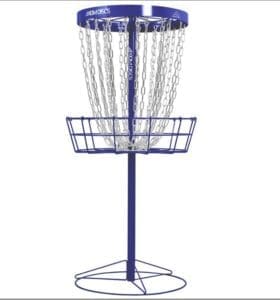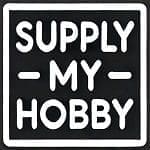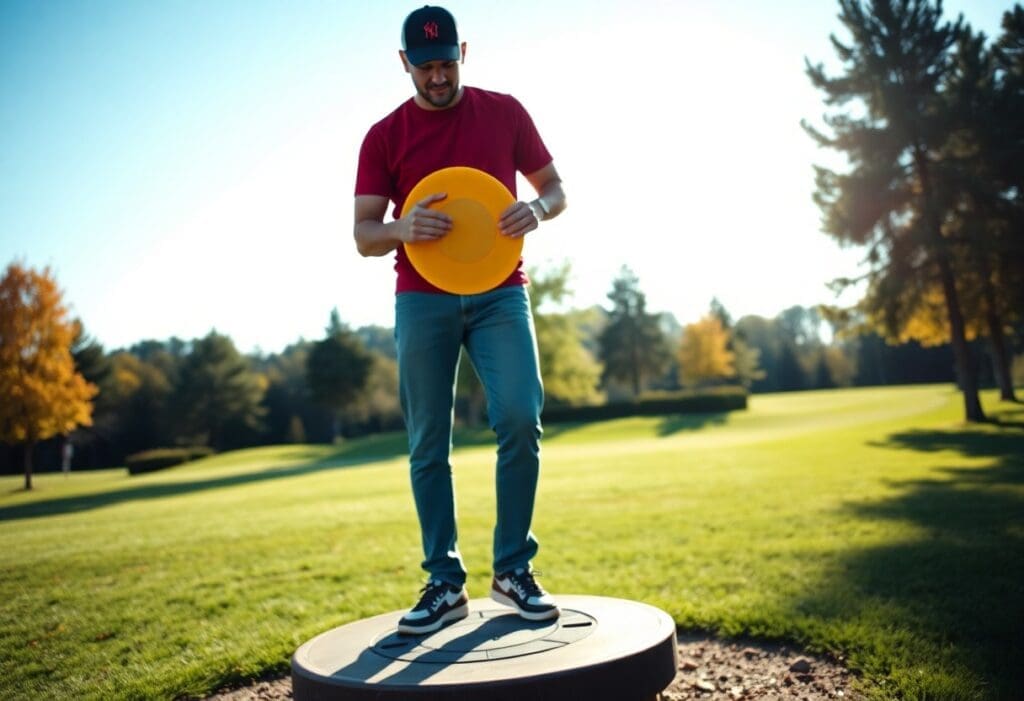Disc golf! It is one of my most favorite sports and past times. During the pandemic, I dove into it more deeply than ever before, and my passion for this hobby is through the roof.
This growing sport combines the challenge of traditional golf with the fun of throwing discs, making it accessible for players of all skill levels.
And word to the warning…never call it “frisbee golf” to a hard core enthusiast. Discs and frisbees are completely different items.
In this guide, you’ll discover the basics of equipment selection, course navigation, and fundamental throwing techniques.
Whether you are looking for a new outdoor activity or seeking a competitive edge, this post will equip you with the knowledge you need to get started with the sport of disc golf.
The Allure of Disc Golf: Why You Should Play
The Accessibility and Inclusivity of the Game
Disc golf is remarkably accessible. People of all ages and skill levels can partake in the fun.
Many public parks offer free or low-cost courses (we have dozens in my local area), making it easy to find a place to play without breaking your budget.
You don’t need expensive equipment. 1-3 discs can get you started.
Many courses are designed to accommodate different ability levels. This ensures that everyone can enjoy the game, from children to seniors, and those with disabilities.
The Health Benefits: Physical and Mental Wellness
Disc golf not only brings joy but also contributes significantly to your overall health.
An 18-hole course can cover 2 to 4 miles, and just walking the course can promote cardiovascular fitness and improve muscle tone.
Additionally, the repeated throwing motion can help you enhance your flexibility, coordination, and strength.
Beyond physical benefits, disc golf serves as a great stress reliever. It is a great way to connect with nature while enjoying social interaction, which can significantly boost your mental health.
The mental wellness aspect of disc golf cannot be underestimated.
Time spent in a serene outdoor environment can reduce anxiety and improve mood, allowing you to detach from daily stresses.
Studies have highlighted that spending time in nature also lowers cortisol levels, the hormone associated with stress.
By socializing with friends or meeting new players on the course, you’ll enjoy a sense of community and belonging. This further supports your mental well-being.
Disc golf not only keeps you physically active but also nurtures emotional resilience and social connections.
Getting Started: Gear You Need
Choosing Your First Disc: Types and Applications
When choosing your first disc, you’ll first want to understand the different types and their applications.
There are three primary types of discs: drivers, midranges, and putters.
Drivers are designed for maximum distance, midranges offer control for more precision, and putters are used for short, accurate throws into the basket.
Consider your playing style and the courses you frequent when making your choice.
You also need to consider weight. Discs can range from 130-135 grams on the low end, and up into the 170-180 gram at the higher end.
Weight heavily impacts stability, so I like to use heavier discs especially when it’s windy. That said, you may find you can get a lot more distance out of lighter plastic.
And of course, you will also find that there are many brands to choose from. I started with Innova and have adopted molds from other brands like Discraft, MVP, and Mint over the years.
This selection process lays the foundation for a great disc golf experience.
Many long time disc golf players will suggest you start by using only a putter, and then adding first a driver and later a midrange as your skills progress.
If anyone asks my opinion, I suggest just buying a starter set which usually comes with 3-5 commonly used discs, like this 5-disc set from Innova.
I bring discs with me when I travel (to play new courses), and tend to travel with four basic discs that serve me well (two drivers, one stable and one understable, one midrange, and a putter). I’ll revisit disc characteristics later in this post so you understand what stable / understable mean.
Must-Have Accessories for New Players
Along with your disc, you’ll need a few accessories that will significantly improve your gameplay and enjoyment.
The basics include a reliable bag to carry your discs, a good water bottle to stay hydrated, and comfortable athletic shoes suited for outdoor terrain.
You can also bring a scorecard and pencil to keep track of your performance, or opt for a smartphone app if you prefer.
A solid disc golf bag will not only protect your discs but also organize them for convenient access. Make sure you pick one that can hold all of your discs, and be sure it comes with a water bottle holder.
You can find a good disc golf bag on Amazon for $11 or more. I recommend investing in a good name brand (Axiom, Dynamic Discs, MVP, or Innova) and buying a larger bag than you think you need. Otherwise, you will be forced to buy a replacement six months later if you really embrace the game.
Hydration is key, particularly during warm days. Make sure you have a durable water bottle to ensure you’re always prepared to quench your thirst.
And finally, a comfortable pair of shoes can prevent discomfort and injuries as you navigate varying terrains throughout the course.
Disc Ratings: Weight, Stability, and More
To pick the right disc for your throwing style and skill level, you’ll first want to understand disc ratings.
Each disc has a rating that typically includes four numbers representing speed, glide, turn, and fade:
- Speed indicates how far and fast the disc can travel, presuming you have the arm speed and mechanics to get it there
- Glide reveals how well it stays airborne
- Turn and fade affect the disc’s path especially during the throw’s follow-through
For example, a disc rated 13 for speed will cut through the air faster than one rated 7.
A glide of 5 suggests a suitable duration in the air.
A negative turn indicates it will curve right (for a right-handed backhand throw) before finishing, confirmed by a fade of 3 that influences its eventual return to the left. This represents what we call understable.
You can predict how a disc will fly pretty well from these metrics alone. This is important if you want to pick the right discs from the start.
Finding the Right Course: Where to Play
Locating Local Disc Golf Courses
To find local disc golf courses, start by exploring websites / apps like UDisc or Disc Golf Scene, which provide comprehensive directories of courses across the globe.
You can also check out community forums or social media groups dedicated to disc golf to gain insights on the best local spots. I am in several Facebook groups, some focused on the local scene and others that are nationwide.
Local parks and recreational areas often host disc golf courses, so a quick visit or call to your city’s parks department may also yield valuable information.
What to Expect: Course Design and Challenges
Course designs vary widely, each presenting unique challenges. You may encounter a mix of open fields, wooded areas, water hazards, and elevation changes.
These elements affect your strategy and shot selection. You’ll want to familiarize yourself with a course’s layout before playing.
Pay attention to basket placements and the length of each hole. This will require you to adjust your throwing technique and distance control.
Some holes are short, less than 200′, and on open fields. Others are long, sometimes up to 800′, and behind obstacles or trees or at the end of a very narrow fairway.
This is the joy of the sport. Every hole is a unique challenge of varying difficulty.
Course Etiquette: The Unwritten Rules
Proper course etiquette enhances the experience for everyone involved, so be mindful of your surroundings and fellow players.
When you finish a hole and get to the next tee box, do NOT drive while another group or person is still on the hole. Major faux pas.
Putting requires focus and attention. Don’t talk or stand right next to anyone while they’re putting, and they will offer the same courtesy to you.
In fact, ensure you keep noise to a minimum as a whole. Some players like to bring bluetooth speakers, but a lot of others prefer to enjoy the sounds of nature while playing. When in doubt, err on the side of quiet.
People bring snacks and drinks on the course, and it’s ideal to practice “leave no trace”. Basically pack it out with you or be sure to throw trash in receptacles, when they are available on the course.
Oh, and if you find a lost disc, check to see if the owner put contact info on it.
NEVER keep a disc without first trying to return it to the original owner. That could be a special disc, or one that is irreplaceable. Don’t be that person who just leans on “Finders Keepers” like a toddler.
If you’re in a group, be aware of pace of play. Keep a steady rhythm to ensure everyone has an enjoyable round.
Share the course. If a solo player or small group is playing behind you, allow them to play through if they’re moving faster than your group.
Disc golfers tend to be friendly and courteous. You should be as well.
Mastering the Basics: Key Throwing Techniques
The Backhand Throw: Mechanics and Tips
The backhand throw is the most common throw in disc golf, characterized by core rotation and a smooth release.
Start with your dominant hand gripping the disc, fingers underneath and thumb on top, feet shoulder-width apart, and weight evenly distributed.
As you initiate your throw, pivot your shoulder toward the target while shifting your weight to your back leg.
Swing the disc across your body and release it with a flick of your wrist for added spin and distance.
- Focus on your grip; a relaxed hold promotes better control
- Engage your core for maximum power without sacrificing accuracy
- Practice the follow-through to maintain a natural throw
With practices, you’ll find it easier to nail the angle and trajectory of your throw, leading to more precise shots on the course.
The Forehand Throw: A Different Approach
The forehand throw, often referred to as a sidearm throw or flick, leads with your elbow and uses a flicking motion with your wrist and forearm.
It’s a great alternative to the backhand, and we are seeing more people lean on this as their primary throwing technique lately.
Grip the disc snugly with your thumb on top and index finger or first two fingers underneath, ensuring that you have control over the disc during the throw.
Shift your weight forward, and as your arm comes straight across your body, release the disc with a twist of your wrist for an accurate shot.
Thumber / Tomahawk Throw: Over the Top
I mentioned earlier how you might have to get behind an obstacle to reach a basket. Well, you’ll also have errant throws, even after years of playing experience.
Sometimes, the only viable route will be over the top of a tree, fence, or other obstacle.
For this, we have the thumber. It has similarities to a baseball pitch in arm motion.
To make this throw, you’ll hook your thumb under the lip of the disc, with your other fingers on top. Then, you throw the disc up and at a 35-45 degree angle (or higher if you’re really close to a tall obstacle) over your shoulder, just like a pitcher would.
The disc will go up, reach its peak, and typically flip over to the right (for a right handed throw). Be sure to keep this flight path in mind when picking what direction to throw it.
I use this throw a lot on local courses. It is a great alternative to have in your bag of tricks.
Putting Techniques: Precision Over Power
Putting in disc golf demands a unique set of skills, emphasizing accuracy rather than long-range power.
Stand with your feet shoulder-width apart, with your lead leg (i.e. right leg if you’re right handed) slightly ahead of the other, focusing your eye on the target.

Keep your grip light and use a straight-arm motion to deliver the disc toward the basket.
A solid stance and steady hand contribute significantly to reducing any unnecessary movements, enhancing your chances to consistently sink putts.
Consider learning various putting styles, such as spin putts or push putts. This will help you adapt to different situations on the course, ensuring that your approach to the basket is both effective and reliable.
If you are serious about improving your putting, nothing can compare to having a quality basket available at home for quick, easy access.
I recommend the Axiom Discs basket shown to the right, and have the same one myself.
Feel free to shop around if this is too expensive for you. Just make sure you get one with 24 chains, or two rows of chains. If you go with a single row, you’ll regret it when your putts go right through and out the backside.
The Mental Game: Strategies for Success
Visualizing Your Shots: The Power of Mindset
Before each throw, envision the trajectory and landing of your disc.
Successful disc golfers rely on visualization to boost confidence and improve accuracy.
Picture the perfect shot, from your stance to the moment the disc glides through the air, cutting through the atmosphere like a breeze.
This mental rehearsal sharpens your focus, helping you anticipate challenges and prepare solutions in advance.
Whether you’re facing a tricky obstacle or an open fairway, a clear mental image can greatly enhance your performance.
Course Management: Playing Smart, Not Just Hard
Effective course management is about analyzing each hole meticulously and making strategic decisions rather than overwhelming yourself with risky plays.
Start by understanding the layout and potential pitfalls on each hole. This enables you to determine whether to take calculated risks or play conservatively for pars.
You’ll need to evaluate factors like wind conditions, terrain elevation, the presence of water hazards, and the distance to the basket before every shot.
Take the time to assess your strengths and weaknesses along with those of the course.
For instance, if you struggle with distance throws, opt for a shorter, safer route around obstacles. This is more likely to yield better results than trying to conquer a daunting shot over trees.
Play to your strengths and adapt your strategies as you progress through the course.
Make smart, informed choices that align with your skill set. It will make a huge difference in achieving lower scores and succeeding on the course.
Join the Community: Embracing the Culture of Disc Golf
Find Local Clubs and Groups
You can take your disc golf experience to another level by connecting with local groups and disc golf clubs.
Search online for clubs in your area, or check with nearby disc golf courses to learn about community events.
A lot of courses have groups that play regularly together, or that organize ‘minis’ (smaller tourneys) at that location.
Consider joining dedicated groups on platforms like Meetup or Facebook. These groups can provide insights and opportunities for playing with others who share your passion.
Many regions also have organized leagues that cater to players of all skill levels, making it easy for you to get involved.
Participate in Tournaments and Events
Tournaments and events can sharpen your skills while helping you grow your group of disc golf friends.
Events range from casual leagues to larger, competitive tournaments that can elevate your gameplay.
You can find opportunities nearby through local clubs or official disc golf organizations like the PDGA (Professional Disc Golf Association). I recommend signing up for a PDGA membership between October and December — your membership goes through the entire next calendar year for a one-year price.
Your participation will not only build skills but also connect you to fellow enthusiasts who share your love for the game.
Tournaments can be remarkably fulfilling.
You’ll challenge yourself in a competitive yet friendly environment, where you can learn from more experienced players and gain invaluable insight into strategy and technique.
Many tournaments also feature clinics where you can pick up tips from seasoned pros, making your participation even more worthwhile.
Plus, these events cultivate friendships and a deeper appreciation for the sport.
Social Media and Online Resources
Social media and other online resources can unlock immense potential for growth and connection within the disc golf community.
Follow dedicated accounts on Instagram, Facebook, and Twitter to stay updated on the latest news, techniques, and events.
YouTube features tutorial videos from experts that can help you refine your skills.
Forums and discussion groups provide insight and advice from fellow players.
Online platforms like Reddit and Instagram not only offer vast resources but also foster a sense of belonging.
Engaging with content creators, participating in online discussions, and sharing your own experiences can greatly enhance your learning and connection with others.
As you navigate the disc golf world, these digital interactions complement your local community involvement, enriching your journey in the sport.
Progressing Your Skills: From Beginner to Competitor
Set Realistic Goals for Improvement
You’ll want to set clear, attainable goals in your journey to improve at disc golf.
Start by assessing your current skill level and pinpoint what specific areas you want to enhance, such as accuracy, distance, or putting.
Break these objectives down into smaller, measurable milestones, ensuring they’re both challenging and achievable.
For instance, aim to reduce your average score by a few strokes over a month or master a new throwing technique.
Small wins will keep you motivated and on track.
Drills and Practice Routines to Enhance Your Game
Just as with any sport, your progression in disc golf will require structured practice to really improve.
Focus on specific drills tailored to various aspects of the game, such as distance throwing, putting, and approach shots.
Allocate time for routine practice each week, mixing in repetition and new challenges to maintain engagement.
Use fun metrics, like tracking the number of successful putts from different distances, to benchmark your progress. Some players will set up a goal with markers at 10, 15, 25, and 50 feet to practice varying distances.
Incorporate a mix of drills into your routine to target all aspects of your game.
Spend time at the driving range to improve distance and accuracy, or using techniques like the “One-Disc Challenge” where you throw only one disc repeatedly.
Practice putting by setting up a temporary course in your backyard and aiming to sink a certain number of putts from various distances within a set time.
Evaluate your performance regularly to see where you need improvements, and adjust your practice sessions accordingly.
Learn from Experts: Resources and Coaches
Invest time in learning from experienced players to elevate your game.
Seek out resources like instructional videos, online courses, and disc golf podcasts that cover techniques and strategies from top players.
Additionally, consider joining a local clinic or hiring a coach who can provide personalized feedback and tailored instruction to sharpen your skills.
Many top-level players share their knowledge through social media, offering tips and engaging in Q&A sessions.
Use platforms like YouTube for free tutorials and insights from seasoned professionals.
Additionally, workshops or clinics can grant you real-time feedback and the opportunity to ask questions directly to those who excel at the game.
Build relationships with skilled players, which can also foster mentorship opportunities, giving you the chance to learn through observation and experience.
The Future of Your Game: Staying Inspired and Informed
Keeping Up with Trends in Disc Golf
By staying updated with the latest trends in disc golf, you can elevate your game and maintain your motivation.
Attend workshops, and tournaments, or follow social media channels dedicated to the sport.
Online forums or local meetups can also expose you to innovative techniques and new styles of play that can inspire you to adopt fresh strategies in your game.
Sourcing New Discs and Equipment
Your gear can significantly impact your performance, so you want to ensure you’re getting good stuff.
Explore local disc shops, as well as online retailers, to find the latest models and brands that can enhance your gameplay.
Check out reviews and try discs before purchasing them. This will help you identify what works best for your style.
Consider demo days hosted by local clubs or retailers where you can test new discs firsthand.
This hands-on approach not only helps you make informed decisions but also introduces you to unique discs that may not be on your radar.
And of course, don’t be shy to ask community members about their preferred equipment. They are likely happy to guide you in finding new favorites as well.
Exploring Disc Golf Travel Opportunities
Traveling to new disc golf courses is an exciting way to expand your experience and challenge your skills.
Look for disc golf festivals, national tournaments, or scenic courses designed by renowned designers in different states (John Houck is one of the mainstays of course design; his courses are always fun).
A disc golf road trip can bring you new friendships and unforgettable memories, as well as expose you to varying landscapes and gameplay styles.
By participating in well-known disc golf events, like the PDGA Championships or local disc golf tours, you can play iconic courses and meet fellow enthusiasts.
Resources like the Disc Golf Course Review website help you discover courses near your travel destinations. You’ll find that different terrains and climates add fun new twists to the game vs. only playing in your local area.
Be open to meeting local players who can share insights on their favorite courses and hidden gems, making your adventure even more enjoyable.
Final Words
Welcome to the world of disc golf!
Begin by familiarizing yourself with the rules and terms, acquiring a few basic discs, and locating local courses to practice.
As you play, focus on improving your skills, understanding the game’s nuances, and enjoying the community around you.
Embrace the learning process, and most importantly, have fun as you explore the exciting world of disc golf!



